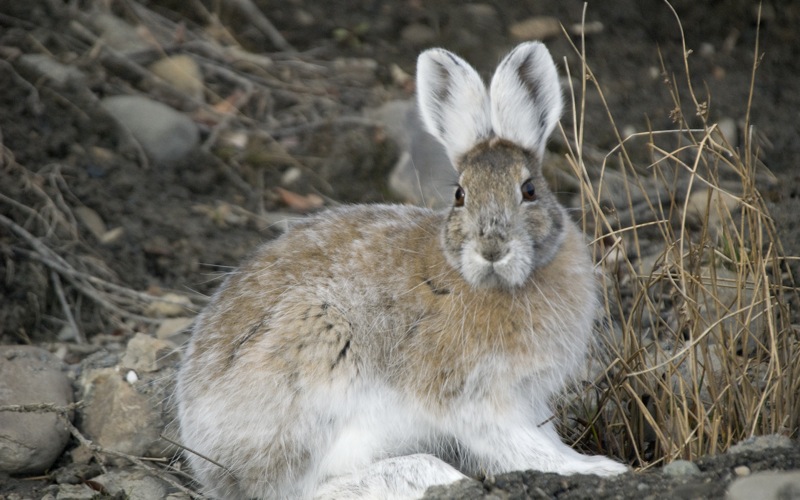
Snowshoe hare in transition
An old Park Ranger friend of mine used to do a fall program about how wildlife adapts for the coming winter. He said four things could happen — migration, hibernation, adaptation, or death.
One of the fascinating parts of autumn in the Rocky Mountains is witnessing this change happening all around us — and it’s not just with the wildlife. While running the other day, I almost stepped into a huge pile of bear scat — dark and filled with seeds, it wasn’t hard to figure out what animal it came from.
Black bears fall into the hibernation category, and during the fall, they are busy preparing themselves for that long winter’s sleep by eating, eating and more eating. In fact, wildlife biologists say that black bears need to eat up to 20,000 calories per day during this critical time. That gives me stomach ache just thinking about it!
They call this obsession with food hyperphagia and I have been an up-front witness to it while working as a ranger in the Sierra. Scrub oak populated the mountain side there, producing copious amounts of acorns. One day while out in the park, I spotted a female bear and one of her yearling cubs and they were eating acorns with such focus, they seemed to not even come up for a breath of air. They were also so consumed (no pun intended), that they were seemingly oblivious to the crowd of tourists that were watching.
The other wildlife I find fascinating to watch during this time of transition are those that adapt by changing the color of their coat. Seeing a weasel that is part tan, part white as it turns into the snowy white coat of winter is a rare treat. So too is seeing a snowshoe hare as its appearance takes on blotchy look of brown and white mixed. Soon they will be hopping across the snow, hoping to blend in to avoid the penetrating eyes of the bobcat or lynx.
But people in the mountains also prepare for the winter. Some, like the birds who fly south, also disappear from the mountains heading for warmer climates like Arizona or southern California, thereby giving them the nickname, “Snowbirds.” Others will spend more time hibernating, or as we say hunkering down in their cabins with a good case of cabin fever.
Me personally, I fall into the adapting category — choosing to get ready for the wind, cold and snow winter brings. Sometimes, that involves chopping wood, and moving patio furniture off the deck, anchoring everything else down. Those of us veterans to Nederland winters, know it’s the wind that will get you, more so than the snow.
Or the adaptation is getting all those winter “toys” ready for fun in the woods and the slopes. Washing my ski pants and winter jackets, pulling sweaters out of moth balls, waxing skis, and using sprays to winterize my snow boots. I’m ready to grown my own warmer coat, by having hats, gloves, and warm down coats to don as the days become chillier and the nigh time dark comes sooner. My own transition is in full swing.

